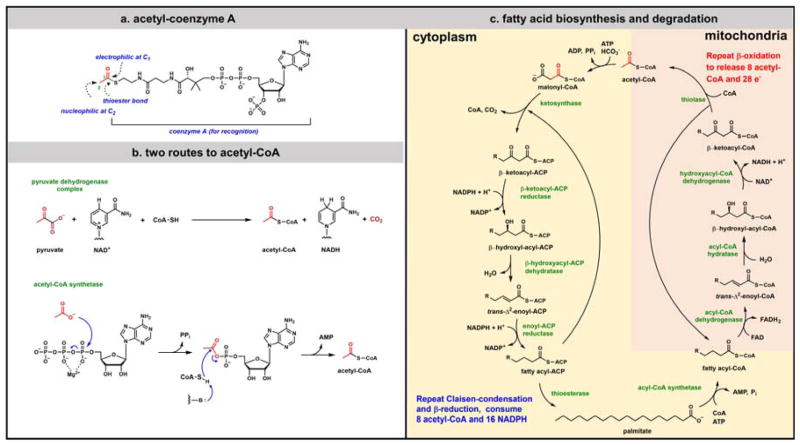Figure 6.
Overview of Acetyl-CoA: (a) structure and chemical features of acetyl-CoA; (b) Two biosynthetic routes to acetyl-CoA involve (1) the oxidative decarboxylation of pyruvate to acetyl-CoA in the transition between glycolysis and TCA cycle catalyzed by the multi-subunit pyruvate dehydrogenase; (2) the conversion of acetate back to acetyl-CoA by nucleotidyl transfer and acetyl-AMP intermediacy. (Free acetate in mammalian cells can arise by multiple routes including histone deacetylase action); (c) in times of energy excess, the utilization of acetyl-CoA carbons for fatty acid biosynthesis occurs in cell cytoplasm while the reverse steps occur during mitochondrial beta oxidation of fatty acids to generate acetyl-CoA molecules.

